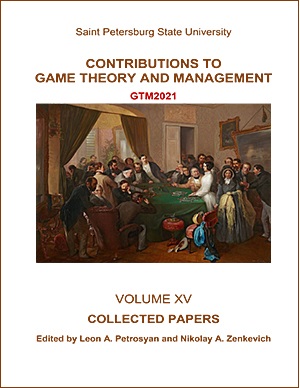Cooperation in the Multi-Agent System with Different Types of Interactions
DOI:
https://doi.org/10.21638/11701/spbu31.2022.06Abstract
Keywords:
n-person prisoner's dilemma, cooperative game, characteristic function, network game, Shapley value
Downloads
References
Downloads
Published
How to Cite
Issue
Section
License
Articles of "Contributions to Game Theory and Management" are open access distributed under the terms of the License Agreement with Saint Petersburg State University, which permits to the authors unrestricted distribution and self-archiving free of charge.




